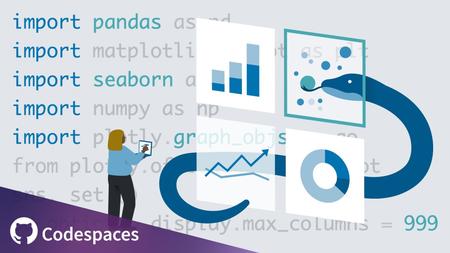
English | MP4 | AVC 1280×720 | AAC 48KHz 2ch | 1h 56m | 364 MB
As data and data-related jobs have grown over the past decade, so has the demand for data skills. If you’re a data professional, this is great news! However, it’s important to continue to adapt to the changing demands of the market, which include adopting tools like Python to approach big data challenges. In this course, Sarah Nooravi shares a practical, project-based examination of Python, covering the skills needed to help you stand out among others in a competitive market. Sarah walks through an end-to-end Python analysis, typical of what you would encounter on the job– starting from the problem statement and takes you all the way through to insight delivery. Sarah helps you break down the problem, set expectations, and covers best practices around data cleaning, data visualization and storytelling. Lastly, she also shares common pitfalls and critical business and soft skills that will help you stand out.
Table of Contents
Introduction
1 Introduction
2 Prerequisites
Case Study Introduction
3 The who, what, where, and why
4 Who
5 What
6 Where
7 Why
8 Case study introduction
Breaking Down the Problem Statement
9 Define the problem The three Ds
10 Get familiar Domain
11 Domain Applied
12 Get familiar Data
13 Get familiar Deliverable
14 Set the right expectations
Data Collection, Cleaning, and Transformation
15 Getting set up in Codespaces
16 Read in data from a CSV file
17 General cleaning techniques
18 General cleaning techniques High-level checks
19 General cleaning techniques Missing values
20 Data transformations Binning
EDA
21 Introduction to EDA
22 Summary statistics
23 Distributions Histograms
24 Data transformations Normalization and log
25 Other distribution types
26 Data visualizations Comparing categories
27 Data visualization Data tables
28 Data visualization Relationships
29 Create a ridge plot
Data Visualization and Storytelling
30 Visual best practices Part 1
31 Visual best practices Part 2
32 Leverage exploratory and explanatory visualizations
33 Choose a medium
34 Storyboarding
35 What’s in a story
36 Putting it all together
Conclusion
37 Wrap-up and next steps
Resolve the captcha to access the links!